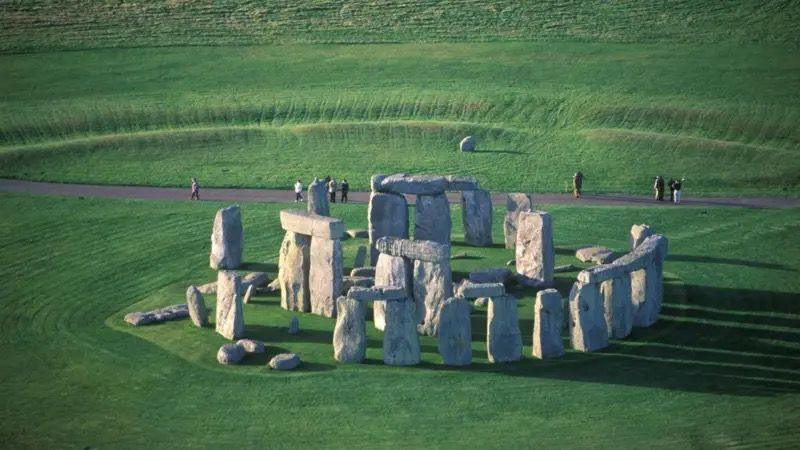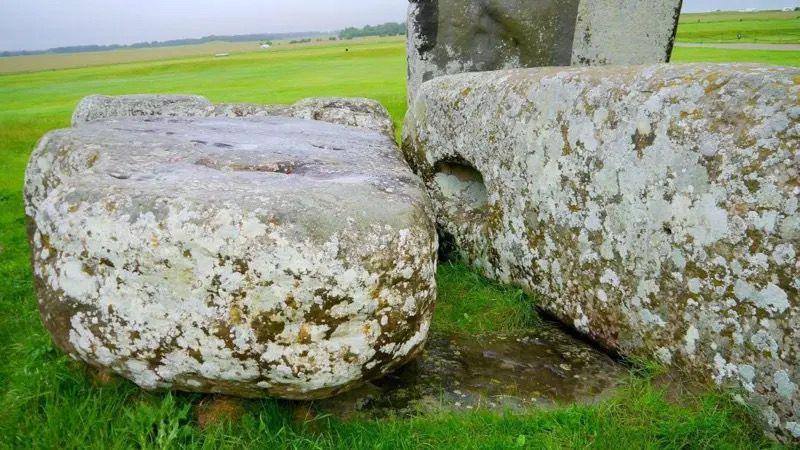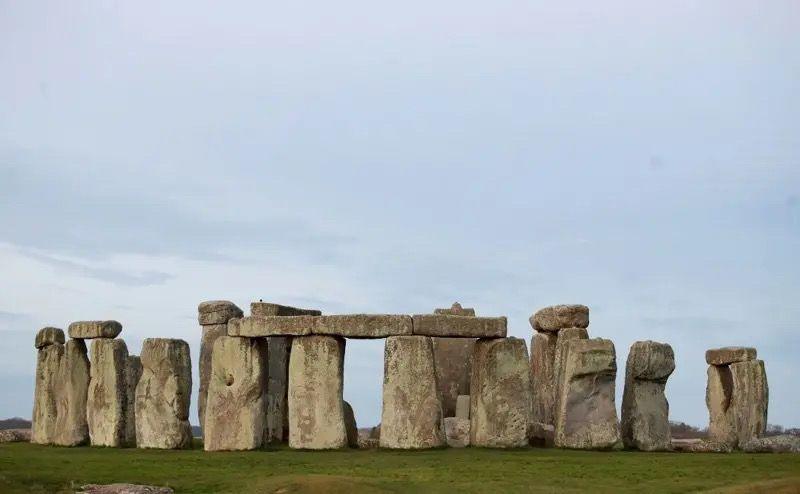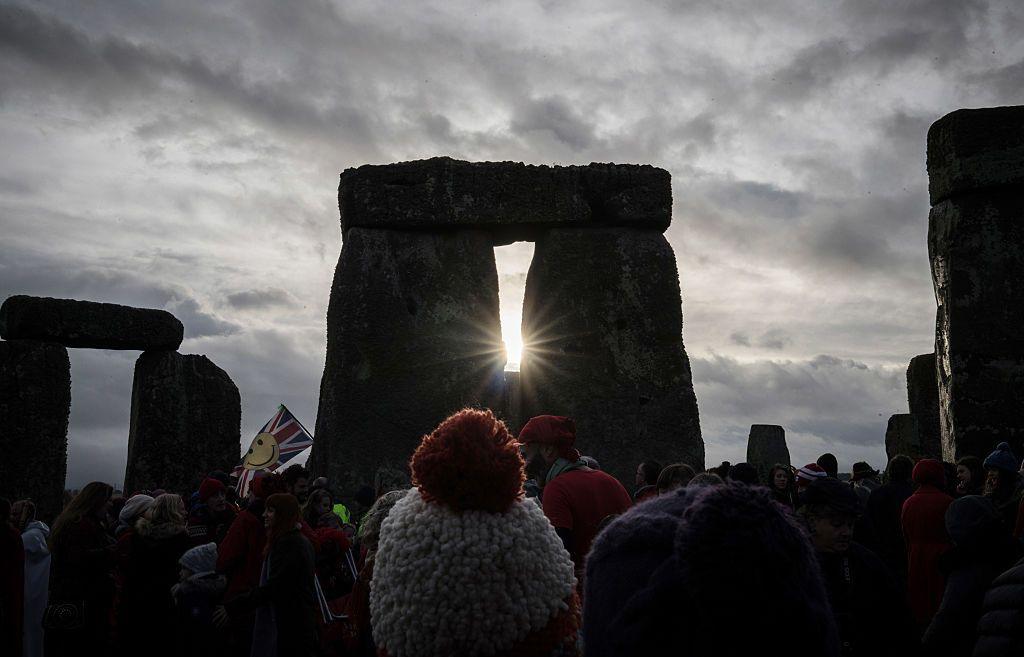Stonehenge's purpose may have been to unite ancient Britain, say experts

- Published
Stonehenge may have been built to unite the early people of Britain - according to a new study.
Expert analysis of the famous circle shows that the stones were brought to Salisbury Plain, where they stand in Wiltshire, from the far north, west and south of the UK nearly 5,000 years ago.
The huge effort it would have taken to move the large stones hundreds of miles at a time when only primitive tools were available, shows they had an important purpose, possibly welcoming new settlers to Britain from Europe - says the research published in the journal Archaeology International.
Professor Mike Parker Pearson, lead researcher from University College London, said: "I think we've just not been looking at Stonehenge in the right way. You really have to look at all of it to work out what they're doing."
New research on origin of Stonehenge rock leaves experts 'stunned'
- Published14 August 2024
Welsh Stonehenge discovery could reveal its mystery
- Published19 February 2019
Is Stonehenge just a giant Lego building set?
- Published16 April 2020
Recent research on Stonehenge's large altar stone, which lies on its side inside the circle, revealed more about the ancient monument and its origins.
Analysis by a team from Aberystwyth University showed that the alter stone had actually come from Scotland and not Wales, as had been thought previously.
Experts found that the stone and its positioning was similar to other stone circles that have been found more than 400 miles away in Scotland.
"It's helped to solve the puzzle of why these distant places had more in common than we might have once thought," said Prof Parker Pearson.
"The similarities in architecture and material culture between the Stonehenge area and northern Scotland now make more sense."

The altar stone lies on its side at the centre of Stonehenge
Construction on Stonehenge began as early as 3000 BC and took place over several stages.
Previous analysis has shown that bluestones, a type of fine-grained sandstone, and larger sandstone blocks called sarsens were used in the monument's early construction.
The bluestones were brought 140 miles (225km) to the site from west Wales and are thought to have been the first stones placed during the monument’s construction. The sarsens, used later, came from an area just 15 miles (25 km) away.
It's thought that the altar stone was brought to the site from northern Scotland between 2500 and 2020 BC.
"The fact that all of its stones originated from distant regions, making it unique among more than 900 stone circles in Britain, suggests that the stone circle may have had a political as well as a religious purpose — as a monument of unification for the peoples of Britain," said Prof Pearson.

The researchers of the study say hundreds, and possibly thousands, of people would have been involved in moving the stones over land, and the journey may have taken about eight months. The wheel hadn’t been invented in Britain yet, and it’s thought sledges may have been used to drag the large stones across the country.
"Travel by land would have provided much better opportunities for spectacle, pageantry, feasting and celebration that would have drawn people in (the) thousands to witness and take part in this extraordinary venture," the study says.

Thousands of people visit Stonehenge for the winter and summer solstice when the Sun lines up with the rocks that stand at the ancient monument
Fast forward 5,000 years and Stonehenge is preparing to welcome thousands of visitors to mark the winter solstice.
The date is the 24-hour period with the fewest hours of daylight in the year, which is why it is known as the shortest day and longest night.
Saturday 21 December marks the Winter solstice across the Earth’s northern hemisphere.
The alter stone, which lies on its side in the centre of the stone circle aligns with the Sun during the winter and summer solstices, with visitors coming to the site from all over the UK and around the world to watch the spectacle.
During the winter in Neolithic times, people in Britain would gather near Stonehenge at the village of Durrington Walls, bringing pigs and cattle with them for a feast.
Stonehenge was also the largest burial ground of its time, which suggests that the site may have been used as a religious temple, as well as a solar calendar.
